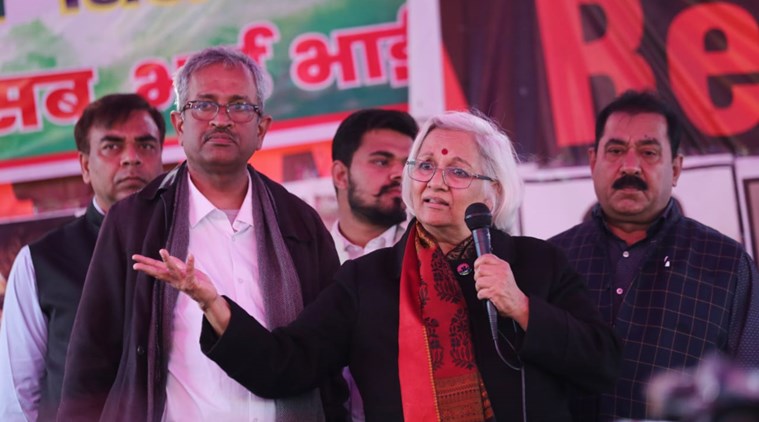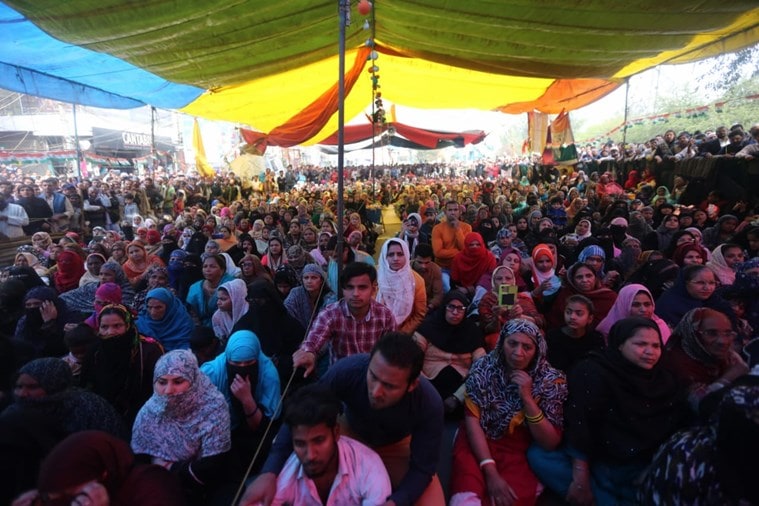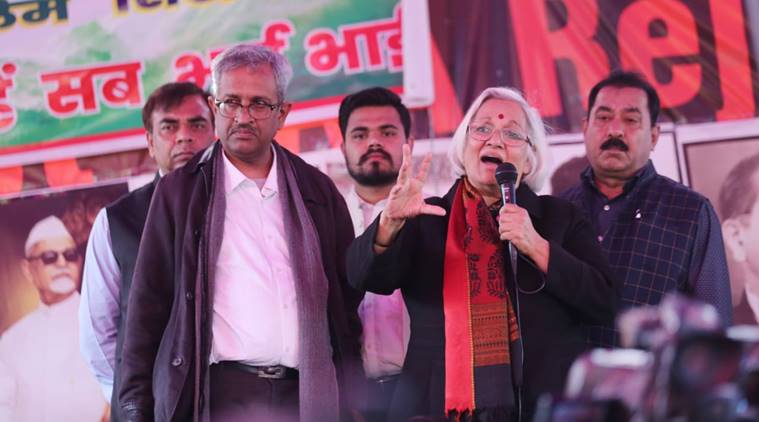 Sanjay Hegde and Sadhana Ramachandran – mediators appointed by Supreme Court – at Shaheen Bagh in New Delhi, Wednesday. (Express photo by Tashi Tobgyal)
Sanjay Hegde and Sadhana Ramachandran – mediators appointed by Supreme Court – at Shaheen Bagh in New Delhi, Wednesday. (Express photo by Tashi Tobgyal)
A two-member mediation panel appointed by the Supreme Court reached Delhi’s Shaheen Bagh on Wednesday to persuade anti-Citizenship Amendment Act protesters to end their blockade of a public road.
Advocates Sanjay Hegde and Sadhana Ramachandran were appointed as interlocutors by the apex court two days ago after it acknowledged that people have a fundamental right to protest. The protesters have been on a sit-in against the new citizenship law for over two months.
“We have come here according to the order of Supreme Court. We hope to speak to everyone. We hope to resolve the matter with everybody’s cooperation,” senior advocate Hegde was quoted as saying by news agency ANI.
Reading out the Supreme Court order, Ramachandran told protesters, “The Supreme Court order acknowledges your (people’s) right to protest, however, this agitation is leading to a blockade. It is causing disruption in people’s daily lives and as much as it is your right to protest, it is also their right to conduct their lives without interruption. As a country, we must respect each other’s rights. We should resolve this issue together and should become a global example.”
EXPLAINED: What is mediation, does it work?
The panel left Shaheen Bagh after speaking with the protesters for nearly two hours and said they would return the next day to resume talks with them. “They (protesters) want us to come back, and we will return for talks. We have talked to the mothers and sisters. They discussed their issues with us,” Ramachandran said.
On Monday, a bench of Justice S K Kaul and K M Joseph had observed that one set of people taking to public roads to air their grievance can inspire others which will ultimately lead to chaos. Democracy, the judges had said, is about the expression of views but “there are lines and boundaries” for it.
 Anti-CAA protesters at Shaheen Bagh. (Express photo by Tashi Tobgyal)
Anti-CAA protesters at Shaheen Bagh. (Express photo by Tashi Tobgyal)
“Certain section of society is aggrieved by a legislation which is being tested in this court. We are not saying that despite pendency of matter, people will not have the right to air their grievance or protest. Question arising is where to protest… Whether traffic can be managed better here or there is not the question. It cannot be a place like this. If today some people, tomorrow some other people may do it. Different portions of city can be blocked by people who may have their grievance…. If everyone starts coming on road, you know Delhi…It will lead to chaos,” Justice S K Kaul had said.
The bench, while hearing two PILs — one by Advocate Amit Sahni and another by Delhi BJP leader Nand Kishore Garg — which highlighted difficulties on account of protesters occupying a road in Shaheen Bagh, had said the way out could be for someone to try and convince the agitators to move out, may be to an identified location. It had asked Delhi Police to suggest alternatives.
 Advocate Sadhana Ramchandran read out the Supreme Court’s orders to the protesters at Shaheen Bagh. (Express photo by Tashi Tobgyal)
Advocate Sadhana Ramchandran read out the Supreme Court’s orders to the protesters at Shaheen Bagh. (Express photo by Tashi Tobgyal)
However, those on the ground had said that while they were open to speak with the authorities, they have no plans of giving up. Sitting on a cot, Mehrunisa (60) had said, “Why don’t people understand our issues? If the Centre agrees to remove CAA, we will stop protesting. Rather than solving the issue, they are busy removing us from here.”
The court will hear the matter next on February 24.